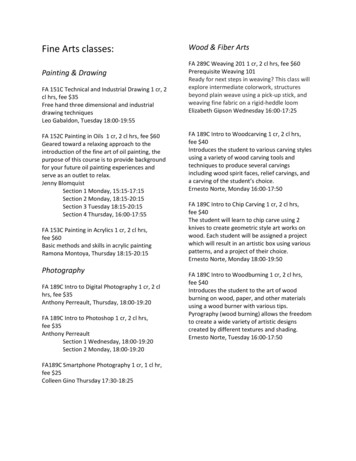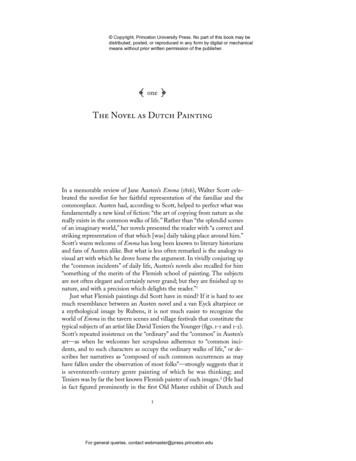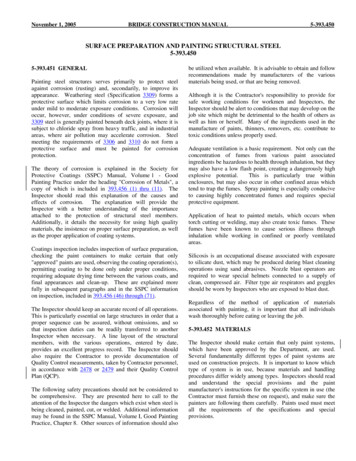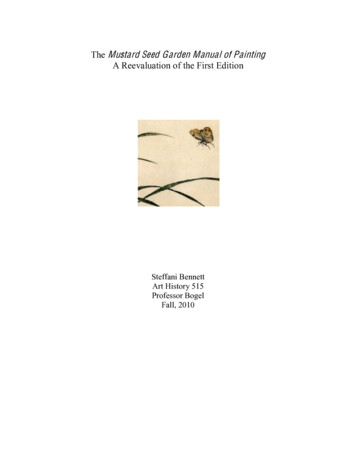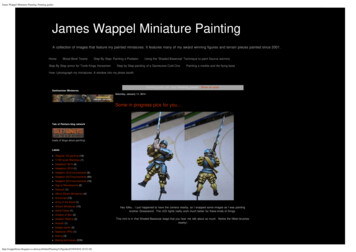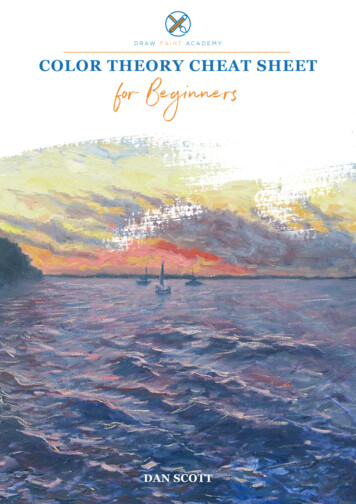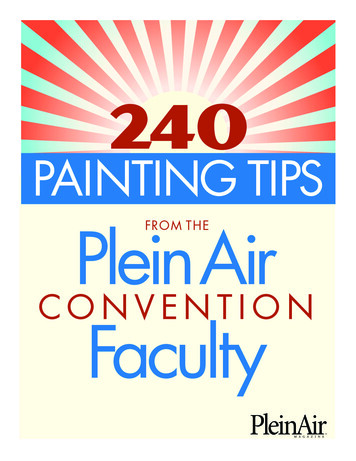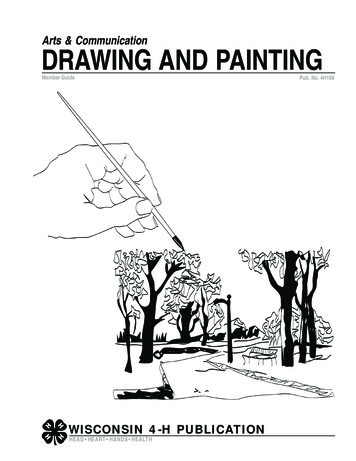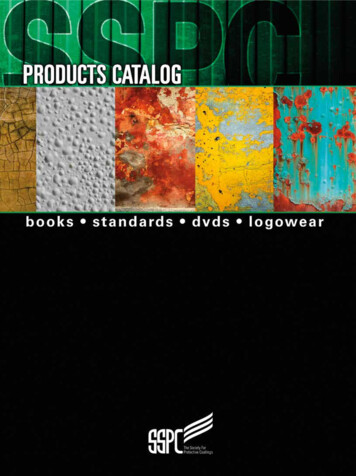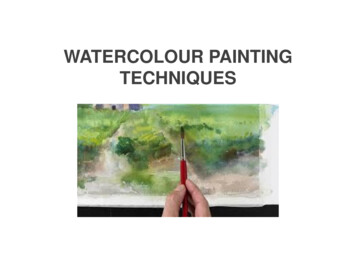
Transcription
WATERCOLOUR PAINTINGTECHNIQUES
WHAT IS WATERCOLOUR PAINTING?* A method of painting that mixes pigments with water.* Used in China as early as the 3rd century.* The method usedtoday was developed inEngland in the 18thcentury.*Painting is done onwatercolor papersthat are specific forwatercolors.
TWO THINGS TO REMEMBER ABOUTWATERCOLOR PAINTING ARE:1) It is always unpredictable you never know whatyou’ll end up with!2) Dark paint is always laid over light, so you needto preplan your image.
WET-ON-DRY TECHNIQUE The “Classic” technique Wet Watercolor paint appliedto a DRY surface. Each new wash is laid over paintthat has already dried. Colors are built up in washes,with highlights left as white paper.
WET ON WET Apply watercolor paint to WET paper. Paint is applied BEFORE the next color hasdried, so that they run together and create softedges. Paper surface must be damp to start and staydamp through the entire process.
WASH / VARIGEATED WASH A thin layer of paint that is laid over theentire paper surface, or a portion of it. Can be applied with a brush or asponge. Must be applied quickly Paint is premixed and ready to usebefore you start the wash. One color is used. A variegated wash uses more than onecolor. Colors bleed into one another. Paint is applied to WET paper whichmakes the colors bleed together.
GRADATED WASH A wash that shifts from darkto light in one color. Applied the same as a wash,with more water added toyour paint for each line ofwash that is laid down.
DRY BRUSH Start with a light wash. Use a dry brush to addmore saturated and boldercolor.
LIFTING WET PAINTWad up some facial tissues and usethem as a negative painting tool.Facial tissues are absorbent and leave asofter-edged impression. Use gentlepressing and twisting, or a dabbingmotion.If you try to scrub with a facial tissue,most will fall apart and soil your washes.Excellent for clouds, soft lighting effects,and puddle control as you paint.
LIFTING DRY PAINTAny of your regular watercolor brushescan be used to lift dry watercolor paint.Use clear water with a gentle scrubbingmotion, blotting carefully with a drier brushor tissue as you go.Using soft hair brushes creates a softeredge but is less effective at loosening thedried paint from the paper.This method offers greater control in theareas you are lightening.
SPRAY TEXTURE A technique applied over washes using an oldtoothbrush. Only the area to be spattered is left uncoveredduring this process; all other areas of the work areprotected with newsprint.
BUILDING UP Begins by laying wash all over the paper, leavingempty ONLY spaces that you want to remain white.*Lay other washes over select areas to intensify colors.
OVER PAINTING Done after a background has been built up.Once all built-up washes are dry, you intensify and adddetails to your work by putting darker washes andindividual brushstrokes overtop.
Please watch this Videowatercolor techniquesYour Assignment:You will receive a piece of 12 x 18 paper.Please divide the paper into 12 squares. That is 4 inch by4.5 inch squares.You will practice:1-Wash1- Spattering2-Gradiated Washes1-Lifting Wet paint2-Variegated Washes1-Lifting Dry paint1-Dry Brush3-Choice- You ChooseYou can try salt, straw blowing, sgraffito, or practice someone you have already done and want to do again.I have straws and salt.
them as a negative painting tool. Facial tissues are absorbent and leave a softer-edged impression. Use gentle pressing and twisting, or a dabbing motion. If you try to scrub with a facial tissue, most will fall apart and soil your washes. Excellent for clouds

